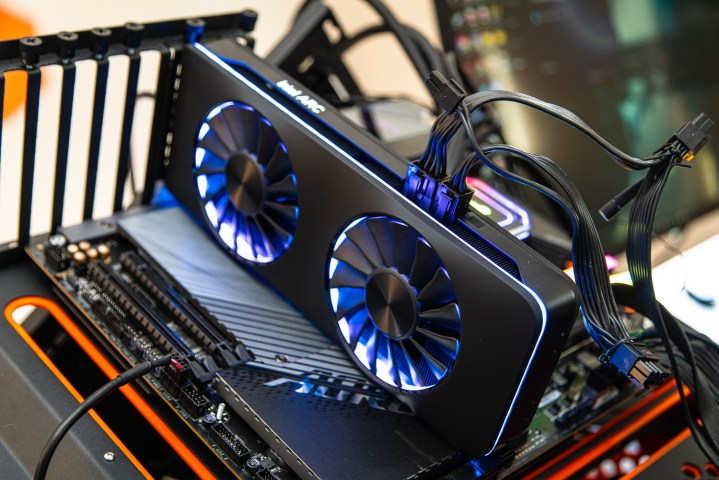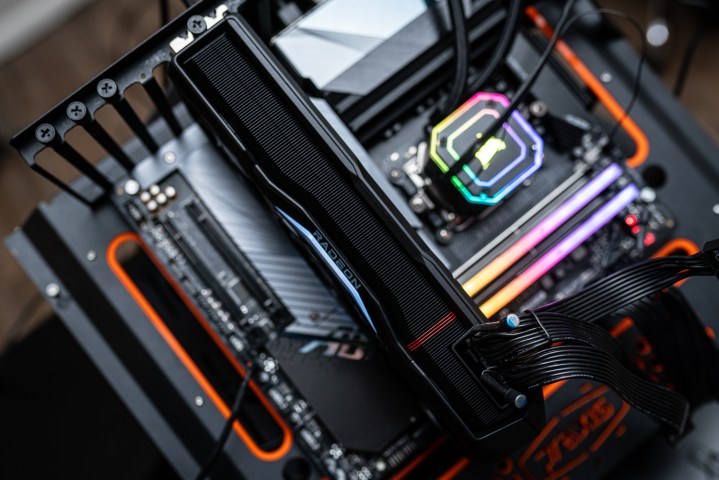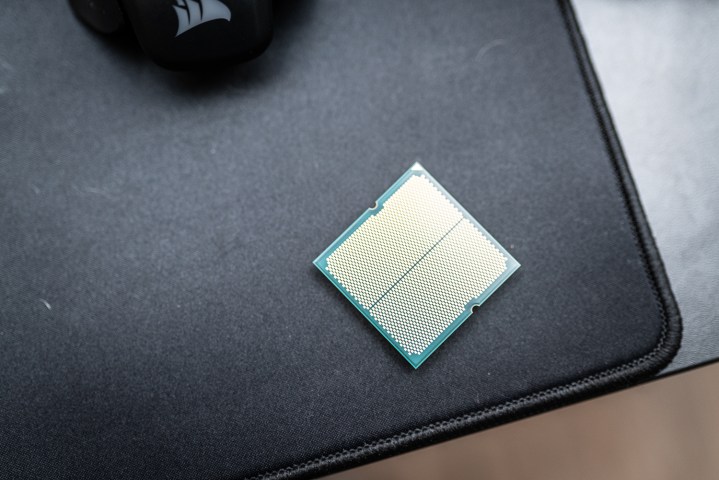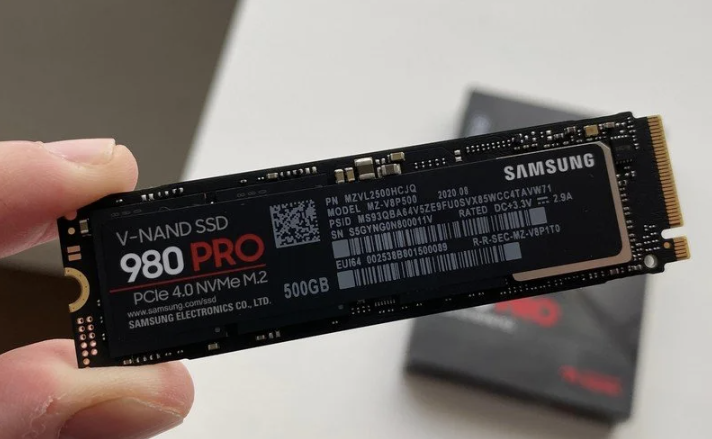When it comes time to build your next PC, the first thing you do is run out to the reviews. What graphics card is best for gaming? What CPU do I need for video editing? Is Nvidia or AMD better? Our job as PC hardware reviewers is to guide you in the right direction.
Our hardware reviews are more data-driven than experiential products like monitors or TVs because, at the end of the day, the main question with PC hardware is what performance you can get at what price. A little more is involved than just playing a few games on the latest graphics cards and running Cinebench on CPUs, though.
How we test graphics cards

Our graphics card reviews are focused on gaming. We will, occasionally, run additional productivity benchmarks like Adobe Premiere Pro and SPECviewperf for high-end, workstation-class GPUs like the RTX 4090, but we’re mainly evaluating how good graphics cards are for playing games.
We test graphics cards across three different resolutions: 1080p, 1440p, and 4K. Although we always record this data, it won’t always show up in the review. Particularly for lower-end GPUs, we may not include
This isn’t an effort to obfuscate the performance of a

The list of games we test is constantly rotating, but we attempt to get as well-rounded of a picture of performance as possible. That includes testing games with ray tracing, games that support different APIs like Vulkan, and games that stress different aspects of a GPU like VRAM.
Here’s the current lineup of games we test:
- Cyberpunk 2077 (with and without ray tracing)
- Horizon Zero Dawn
- Forza Horizon 5
- Hogwarts Legacy (with and without ray tracing)
- Returnal (with and without ray tracing)
- Resident Evil 4 (with and without ray tracing)
- Red Dead Redemption 2
- Assassin’s Creed Valhalla
- Metro Exodus Enhanced Edition (with ray tracing)
- The Last of Us Part One
- 3DMark Time Spy and Port Royal
Depending on when you’re reading this, our test suite may have changed. Regardless, we feed all of the results into a geometric mean to get an overview of performance. This is similar to an average, but it accounts for the widely variable results you see from each game. Games that are very demanding or not very demanding can skew a typical average, and the geometric mean accounts for those outliers to present a more representative average.
In addition to the geomean, we also present individual results for rasterized and ray-traced benchmarks. These results provide a lot of color to the average and showcase if a GPU is better in certain areas. For example, one GPU might have a higher average due to strong
Our goal is to never just present numbers to you. We want to contextualize them with the experience of playing games. Going from 15 frames per second (fps) to 30 fps is the difference between playable and unplayable. Going from 100 fps to 200 fps is the difference between good and great. You’re getting double performance in both cases, but one is more meaningful than the other.

In addition, no result exists in a vacuum, so we attempt to go wide in our GPU reviews to compare the product we’re reviewing to as many other GPUs as possible. We want to show competitors you can buy for around the same price, but also what performance you can expect if you spend a bit more, and if you spend a bit less.
A final note on performance is image reconstruction. AMD, Nvidia, and Intel all have different different super resolution tools, but we run our tests with them off as a rule. The only exception is Nvidia’s DLSS 3, which includes Frame Generation. We include this number, separately and clearly marked, in games that support DLSS 3, but we don’t go out of our way to choose games that support the feature. In addition, this data only shows up in Nvidia reviews for the product we’re reviewing, showcasing the feature but not swaying the final average of performance.
Other considerations

Performance is king for a
Fan noise and temperatures are key areas we look at, but we don’t take a scientific approach here. Does the GPU get loud? Does it run hot? Most importantly, does that matter? Given the wide range of cooling solutions available on various graphics cards, we’re looking for clear issues that should be present across models, not a couple of degrees above or below where we’d expect to see a GPU.
We do look at efficiency, however. Along with our performance data, we also monitor metrics like VRAM usage, clock speed, power draw, and latency. We don’t want to bog down the review with all of this data, but comparing the power we’re seeing and the performance we’re getting gives us an idea about how efficient a GPU is, which we’ll note in the review.
Finally, we take a look at the overall build quality and design of the GPU, along with its size and weight. This doesn’t factor too heavily into the final score in most cases, though, as you can find wildly different designs through partner cards for most GPUs.
How we test processors

Processors are a different beast than graphics cards, and our testing includes a wide range of different tasks. Here, we focus even more on performance. After all, the processor is hidden at all times, so who cares about how it looks?
There are some other considerations, though. To start, we take a look at the full platform. Do you need to buy a new motherboard to upgrade? What generation of RAM does it require? Are you dealing with an efficient CPU with good midrange performance, or a high-end behemoth with high core counts and boosted clock speeds? These are important questions to answer before even getting to a benchmark.
We also usually have some discussion of the architecture. It’s hard to get a clear view into what the architecture is doing in an isolated scenario, but understanding how a chip works can provide hints into why it behaves the way it does.
Productivity

We start with productivity benchmarks when testing CPUs, getting an idea of how they fare in a variety of tasks. Most of these tests are synthetic, meant to push various parts of the CPU to see where it excels and where it breaks.
Here are the productivity benchmarks we run for processors:
- Cinebench R23 single and multi-core — a demanding rendering benchmark that provides a good overview of single and multi-core performance.
- 7-Zip — a compression and decompression benchmark that heavily favors AMD CPUs (noted in our reviews).
- Blender Monster, Junkshop, and Classroom — and real-world rendering benchmark that stresses multi-core performance.
- Handbrake — a video encoding benchmark that excels with high core counts and clock speeds.
- JetStream 2 — a web-based benchmark that measures performance across 64 browser-based tests.
- PugetBench for Photoshop — a real-world productive benchmark that stresses multiple CPU-bound tasks.
- Y-cruncher single and multi-core — a benchmark that calculates 500 million digits of Pi on the CPU.
Unlike our GPU reviews, we go deep instead of wide with processors. That means we’re usually only comparing results for a few CPUs rather than the seven or eight we do with GPUs.
Gaming

Productivity takes center stage for a processor, but we also take a look at gaming performance. The games we test here vary quite a bit from the games we test for GPUs, trying to show the performance differences between CPUs rather than relying solely on popular, recent games.
Here are the games we test:
- F1 2022
- Far Cry 6
- Gears Tactics
- Hitman 3 (Dartmoor)
- Red Dead Redemption 2
- LeelaChessZero
- 3DMark Time Spy CPU
Our CPU benchmarks run at 1080p, and that’s so we can see performance scaling between products. As you climb to
Other PC components

In general, we don’t test other PC components like power supplies,
We have, however, vetted the products we use on our test bench. In the case of CPUs and GPUs, all of the numbers we gather are from the game test platform, running the same hardware, all of which we’ve tested to ensure it’s stable.




